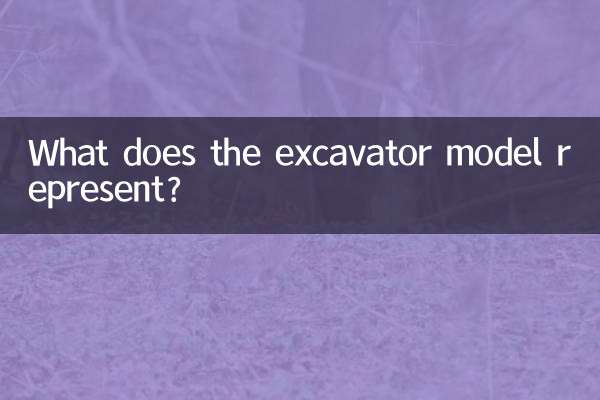What engine does Kato use: Revealing the power core of popular engineering machinery
Recently, hot topics in the field of construction machinery have focused on the performance of KATO brand equipment, especially its engine configuration. As a well-known Japanese engineering machinery manufacturer, Kato's excavators, cranes and other products are known for their high efficiency and durability, and the engine, as a core component, is the focus of users' attention. This article will combine the hot discussions on the entire network in the past 10 days to conduct a structured analysis of Kato Equipment’s engine technology.
1. Kato’s commonly used engine brands and models

| Device type | Engine brand | Typical model | Displacement(L) | Power(kW) |
|---|---|---|---|---|
| medium excavator | Isuzu | 4JJ1X | 3.0 | 55-80 |
| Large crane | Hino | J08E | 7.7 | 175-205 |
| small excavator | Yanmar | 3TNV88 | 1.6 | 25-35 |
2. Analysis of engine technology highlights
1.Environmental performance upgrade: The equipment launched by Kato in recent years generally meets the National IV/Euro V emission standards and uses high-pressure common rail fuel injection and EGR exhaust gas recirculation technology to reduce nitrogen oxide emissions.
2.Intelligent control module: The new engine is equipped with an ECU electronic control unit, which can monitor fuel efficiency, water temperature and other parameters in real time. Some models support remote fault diagnosis.
3.Designed for durability: Adopting reinforced cylinder material and stratified cooling technology, it can operate stably in an environment of -30℃ to 50℃, with an average overhaul period of more than 15,000 hours.
3. Top 3 hotly discussed issues among users
| Ranking | question | Discuss the popularity index |
|---|---|---|
| 1 | Is Kato engine suitable for domestic oil products? | 8.7/10 |
| 2 | Used Equipment Engine Maintenance Costs | 7.9/10 |
| 3 | The impact of electrification transformation on traditional engines | 6.5/10 |
4. Market comparison data
| brand | Average fuel consumption (L/h) | Noise level(dB) | Warranty period (years) |
|---|---|---|---|
| Kato | 8-12 | 72-75 | 3 |
| Komatsu | 9-13 | 74-78 | 2 |
| Caterpillar | 10-14 | 75-80 | 2.5 |
5. Future development trends
1.Hybrid technology application: According to industry sources, Kato is testing a gasoline-electric hybrid system, which is expected to reduce fuel consumption by more than 20%.
2.Hydrogen fuel research and development: The hydrogen fuel engine prototype developed in cooperation with Toyota has completed 2,000 hours of durability testing and is scheduled to be put into trial production in 2025.
3.localized production: In order to reduce costs, Kato announced that he will build a new engine factory in Thailand. In the future, equipment in the Asia-Pacific region will use locally produced powertrains.
To sum up, Kato equipment currently mainly uses mature engine solutions from Japanese brands, which has competitive advantages in terms of energy efficiency ratio and reliability. With the improvement of environmental protection requirements and technological iteration, its power system is rapidly developing in the direction of intelligence and low carbonization.

check the details

check the details